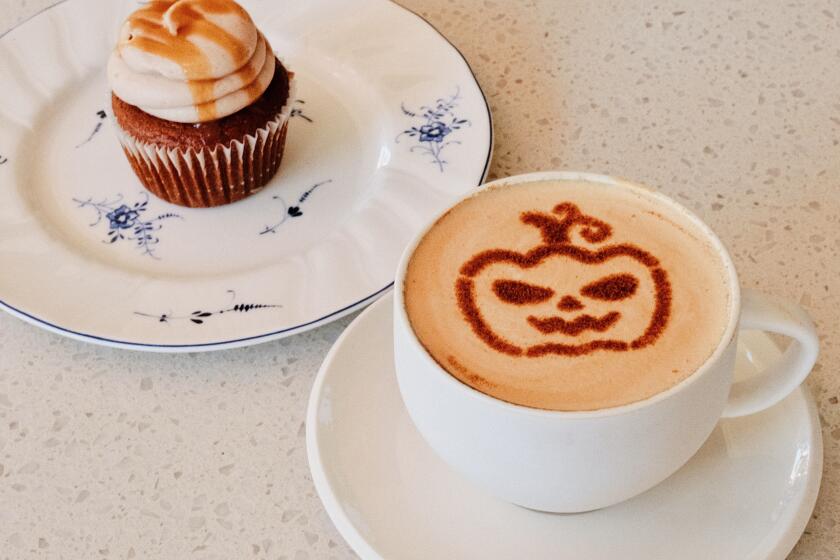A Prune by Any Other Name Tastes as Sweet
I just got back from the U.K., a land where people chow down on deep-fried Mars bars, boiled-to-oblivion vegetables and cookies with the dubious name “digestive biscuits.”
It’s amazing that name has survived, given the importance that marketers place on product names. Why, over here, even the word “prune” is being reexamined, by request of the California Prune Board. The board was worried that the word “prune”--imagine!--might carry negative connotations and asked the U.S. Food and Drug Administration if they could officially call their product “dried plums.” The FDA granted the request.
Prunes aren’t the first food to get this kind of renaming make-over, according to the Tufts University Health and Nutrition Letter. For instance, the fish we call mahi-mahi--which means “strong” in Hawaiian--used to be known as dolphinfish. (You can imagine what people thought they were getting.)
Here’s some others:
* Chilean sea bass used to be called “Patagonian toothfish.”
* The kiwi was once called a “Chinese gooseberry.”
* Sweetbreads (yum!) were once known as what they are: thymus glands.
And while we were in the U.K., I was careful not to choose “rock salmon” from the fish-and-chip store menu. My kid would have killed me. Rock salmon is really a kind of shark--and sharks are her all-time favorite creatures.
Of course, just as a rose would still smell as sweet, some foods would remain delicious whatever they were called. Like Marmite, another British specialty. It’s a tar-like paste made from salty, boiled-down yeast cells. Load a dollop on your knife. Spread it on bread. And enjoy!
Hey, Watch the Elbows! And Pass the Butter
The U.K. has a greater population density than the U.S.--and no quarters are more crowded than those of my sister, who lives in a modest two-story house with her 18 cats.
She really should buy a nice country estate. After all, overcrowding causes stress. It might even make one plump.
That’s what Swedish scientists found when they kept monkeys in crowded quarters, we read (again in the Tufts newsletter). Many of the crowded monkeys overate and put on fat around their middles. Does that mean the same would happen--or is happening--to human beings? There’s not enough evidence yet to say.
There is evidence, though, that overcrowding is stressful. Levels of a key stress hormone, called cortisol, tend to rise if conditions get cramped or otherwise aggravating.
And a new study reports that--contrary to popular and scientific belief--crowding is stressful regardless of one’s ethnic background.
Yes, there are cultural differences in how close people like to stand to each other, say the scientists, writing in the Journal of Personality and Social Psychology. And, yes, there are cultural differences in what people perceive as crowded.
But just because someone likes to stand close or is used to being cramped doesn’t mean they’re dealing well psychologically with overcrowding.
In the study, Gary Evans of Cornell University and co-workers interviewed and psychologically assessed 464 people of various ethnic backgrounds. Crowding was linked to equal levels of emotional distress in the different ethnic groups--regardless of income level, the researchers found, and regardless of how crowded different ethnic groups thought they were. Evans and Co. hope that urban planners will take these findings to heart.
Of course, we’re all different. Some of us are happy and serene surrounded by throngs of folks; some can’t stand a crowd. Rodents are the same. In behavioral studies, some don’t seem to give a fig when conditions get cramped; others head off down escape tubes for wide open spaces.
(Sis, get that country estate. All your cats will stay. And think of how many more you can get. . . .)
*
If you’d like to suggest a topic, write Rosie Mestel at L.A. Times, 202 W. 1st St., Los Angeles, CA 90012 or e-mail her at rosie.mestel@latimes.com.
More to Read
Eat your way across L.A.
Get our weekly Tasting Notes newsletter for reviews, news and more.
You may occasionally receive promotional content from the Los Angeles Times.









